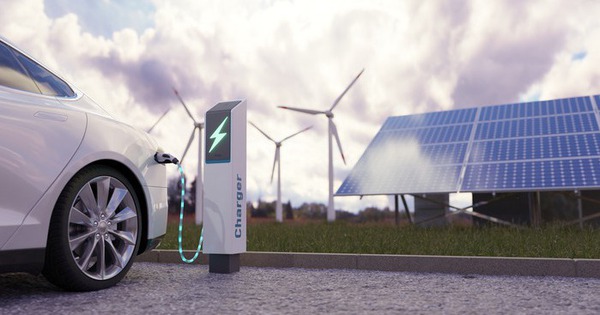Want to buy an electric car and charge it with solar energy? An expert just solved the problem for you!
How many solar panels do you need to charge your electric car “for free”?
Most electric car owners will install a charging station or have the ability to charge from the grid in their own homes. However, charging the vehicle overnight to be ready for daily use can be more costly than they think.
But what if their home is powered by solar or wind energy?
In recent years, the widespread installation of solar power systems has provided clean and sustainable energy for many households. They have been able to save a significant amount on electricity bills if they have enough solar panels.
The question is, how many solar panels will you need to provide enough energy for your electric car?
Keep in mind that there are many factors to consider when using solar energy to charge an electric car. First, the power of the solar system greatly affects the number of panels the homeowner should install.
Most residential solar panels have an output power of 250 watts, but there are larger panels with power up to 400 watts. Each individual panel generates between 1.2 and 1.5 kWh of electricity per day, depending on the intensity of sunlight.
The next consideration is the battery capacity and the electric usage of the electric car.
Determining the number of times you charge your electric car in a month is also an important variable when deciding how many solar panels you need to charge it.
Lastly, the number of kilometers the owner will drive the car in a month is also a factor to consider.
It’s time for some calculations
According to a study from the US Department of Transportation in 2022, the average American drives a car approximately 13,476 miles (21,688 km) per year.
Some basic calculations show that on average, an American will drive 1,123 miles (1,807 km) in a month and over 37 miles (59.5 km) per day.
Let’s say I own a Tesla Model Y electric car with a range of 310 miles (498.9 km), we can see that it will need to be fully charged 4 times (approximately 3.62 times) every month.
Multiplying that number by the 81 kWh battery capacity, we get a total of 324 kWh. Dividing it by the number of days in a month, we have a result of 10.8 kWh.
Dividing 10.8 kWh by 5 hours of sunlight in a day (a safe estimate) leads to the conclusion that the solar power system needs to generate 2.16 kWh of electricity.
As a significant amount of energy is lost in the conversion process from solar energy to electricity, the solar power system will only have about 78% energy output – dividing by 0.78, we get 2.77 kW.
Then, we can divide that number by the power rating of the solar panels (250 W should be converted to 0.25 kW and 400 W to 0.4 kW), resulting in 11 panels of 250 W or 7 panels of 400 W.
The above equation can also be applied to wind power. However, it is important to note that this equation has many variables, as even minor changes (the range of the electric car, the power rating of the panels, the number of sunny hours per day, etc.) can yield completely different results.
More importantly, if there is no energy storage solution from the solar power system, charging can only occur during daylight hours.

